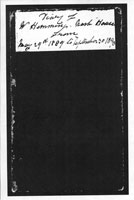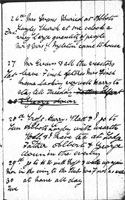Frances Evans (nee Phelps) (1826-1890)
 Frances Evans - a 'cabinet portrait' by Elliott and Fry, Baker Street, London (John Evans archive, Ashmolean Museum) |
Frances Phelps (known as Fanny) was John Evans's cousin, like his first wife, Harriet Dickinson. Frances was born at Bramblebury, Woolwich but a greater part of her life had been spent in Madiera in an old house called Carmo, near Funchal. Frances spoke Portugese as naturally as she did English. Her grandfather had been born and bred in Gloucestershire and sailed for Madiera in 1784. Her parents were Joseph and Elizabeth (nee Dickinson) Phelps, vine growers on Madiera. The family was large and very close. Her father was Joseph Phelps's seventh child and she herself had six sisters and four brothers. Frances and John married on 23 July 1859 at St. George's, Bloomsbury. She was a very close member of their large family being a long-term friend of both John and Harriet. In fact, she had been a bridesmaid at John's first wedding. John and Frances's honeymoon was archaeological in character, as had been his first. The newly married couple visited Colchester to look at a private collection, then went on to look at gravel pits at Lexten. They next went to Norfolk and Cambridgeshire to look at architecture and more gravel pits. Then went on to Yorkshire to view private collections of fossils, on to Nottinghamshire, visiting Market Bosworth, Leicestershire (John's father's home) and finally home to Nash Mills. Fanny then knew what 'holiday' meant to her new husband. They enjoyed 31 years of marriage together before she died of cancer at the age of 63. Frances was buried in the same grave as Harriet, in the churchyard at Abbots Langley. She had been Evans's close companion, sharing his many interests as well as being a loving stepmother to the children, as she had no children of her own. |
|||||||||
Frances is described in Joan Evans's book Time and Chance as 'a little plump, with short-sighted hazel eyes and clearly defined features; graceful with long ringlets and beautiful small hands. A good linguist and beautiful pianist'. William Hemmings, the Evans's butler, kept four diaries between May 1889 and August 1896. Fanny's illness, death and burial are recorded in the first diary. |
||||||||||
|
||||||||||
Further References / Links:Joan Evans, Time and Chance: The Story of Arthur Evans and His Forebears (1943) |
||||||||||



